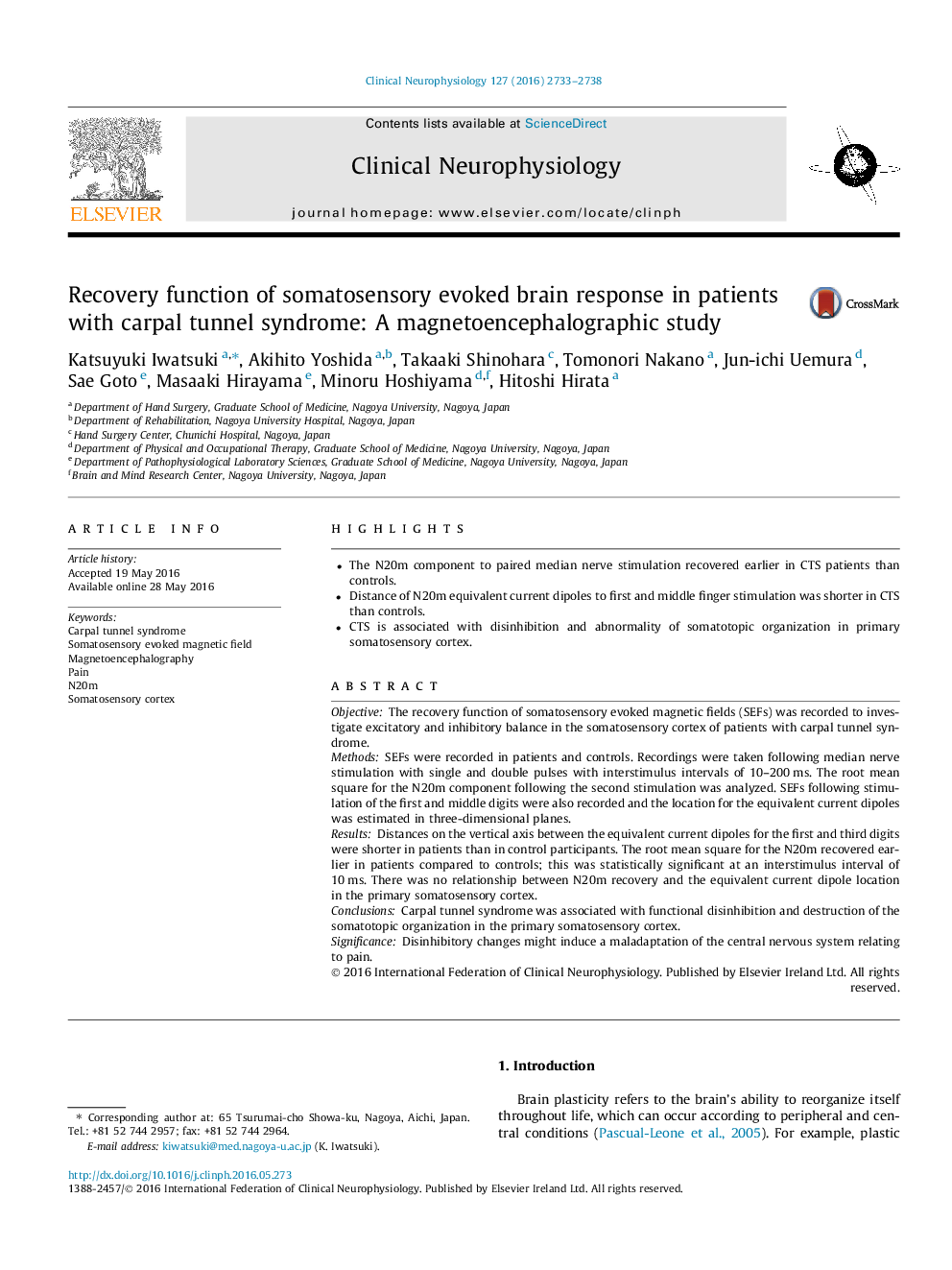| Article ID | Journal | Published Year | Pages | File Type |
|---|---|---|---|---|
| 3042665 | Clinical Neurophysiology | 2016 | 6 Pages |
•The N20m component to paired median nerve stimulation recovered earlier in CTS patients than controls.•Distance of N20m equivalent current dipoles to first and middle finger stimulation was shorter in CTS than controls.•CTS is associated with disinhibition and abnormality of somatotopic organization in primary somatosensory cortex.
ObjectiveThe recovery function of somatosensory evoked magnetic fields (SEFs) was recorded to investigate excitatory and inhibitory balance in the somatosensory cortex of patients with carpal tunnel syndrome.MethodsSEFs were recorded in patients and controls. Recordings were taken following median nerve stimulation with single and double pulses with interstimulus intervals of 10–200 ms. The root mean square for the N20m component following the second stimulation was analyzed. SEFs following stimulation of the first and middle digits were also recorded and the location for the equivalent current dipoles was estimated in three-dimensional planes.ResultsDistances on the vertical axis between the equivalent current dipoles for the first and third digits were shorter in patients than in control participants. The root mean square for the N20m recovered earlier in patients compared to controls; this was statistically significant at an interstimulus interval of 10 ms. There was no relationship between N20m recovery and the equivalent current dipole location in the primary somatosensory cortex.ConclusionsCarpal tunnel syndrome was associated with functional disinhibition and destruction of the somatotopic organization in the primary somatosensory cortex.SignificanceDisinhibitory changes might induce a maladaptation of the central nervous system relating to pain.
